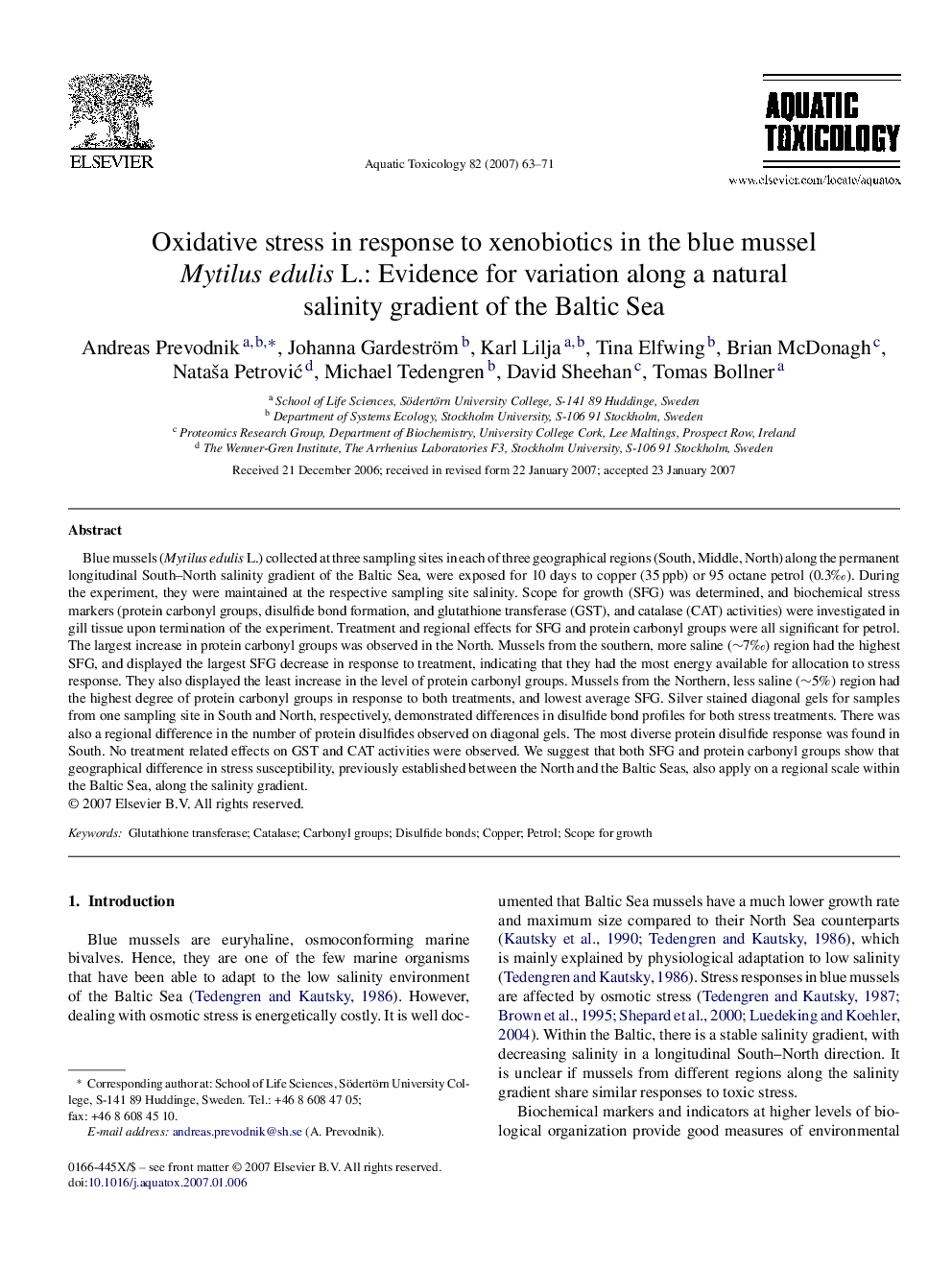| کد مقاله | کد نشریه | سال انتشار | مقاله انگلیسی | نسخه تمام متن |
|---|---|---|---|---|
| 4531147 | 1324756 | 2007 | 9 صفحه PDF | دانلود رایگان |

Blue mussels (Mytilus edulis L.) collected at three sampling sites in each of three geographical regions (South, Middle, North) along the permanent longitudinal South–North salinity gradient of the Baltic Sea, were exposed for 10 days to copper (35 ppb) or 95 octane petrol (0.3‰). During the experiment, they were maintained at the respective sampling site salinity. Scope for growth (SFG) was determined, and biochemical stress markers (protein carbonyl groups, disulfide bond formation, and glutathione transferase (GST), and catalase (CAT) activities) were investigated in gill tissue upon termination of the experiment. Treatment and regional effects for SFG and protein carbonyl groups were all significant for petrol. The largest increase in protein carbonyl groups was observed in the North. Mussels from the southern, more saline (∼7‰) region had the highest SFG, and displayed the largest SFG decrease in response to treatment, indicating that they had the most energy available for allocation to stress response. They also displayed the least increase in the level of protein carbonyl groups. Mussels from the Northern, less saline (∼5%) region had the highest degree of protein carbonyl groups in response to both treatments, and lowest average SFG. Silver stained diagonal gels for samples from one sampling site in South and North, respectively, demonstrated differences in disulfide bond profiles for both stress treatments. There was also a regional difference in the number of protein disulfides observed on diagonal gels. The most diverse protein disulfide response was found in South. No treatment related effects on GST and CAT activities were observed. We suggest that both SFG and protein carbonyl groups show that geographical difference in stress susceptibility, previously established between the North and the Baltic Seas, also apply on a regional scale within the Baltic Sea, along the salinity gradient.
Journal: Aquatic Toxicology - Volume 82, Issue 1, 20 April 2007, Pages 63–71